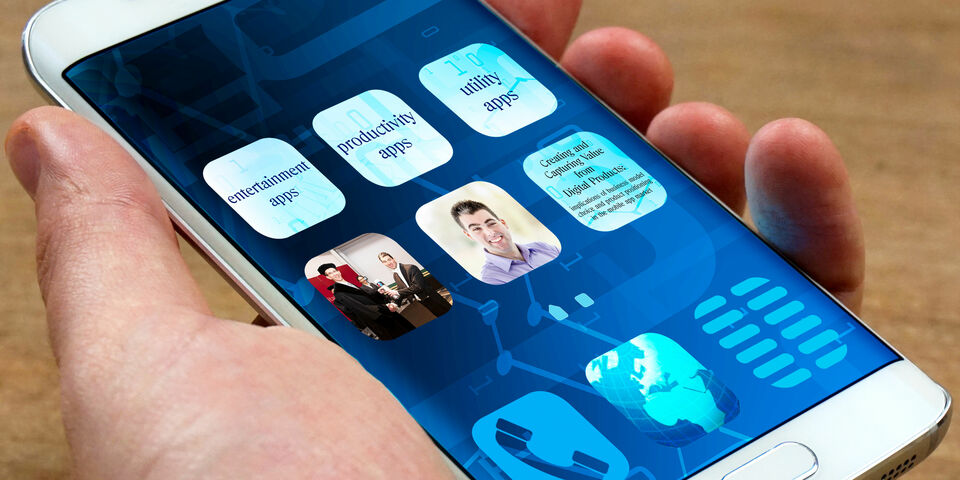Home Stretch | Competing for the app user
More than two million applications are on sale in the app stores owned by Apple and Google, and even though the market is starting to reach saturation point, new ones are being added every day. What can you do, as an app developer, to make sure it's your product that gets chosen? PhD candidate Joey van Angeren investigated how choices made in the business model impact a product's ability to stand out in the app store.
People are spending ever more time on their cell phones. Market researchers predict that this year for the first time ever we will spend more time on our smartphones than in front of the television. The majority of our telephone time is spent using apps. Every day we open on average some ten apps we've selected; per month we use around thirty.
Despite there already being more than two million apps in app stores, there appears to be still more room for new applications, explains Joey van Angeren. He recently took his doctorate at the Department of Industrial Engineering & Innovation Sciences; now he is assistant professor of Digital Innovation at the VU Amsterdam.
Opportunities
“In purely economic terms the app market still presents opportunities, although this past year the number of apps available in app stores declined for the first time. The number of applications is huge, and many are competing for the attention of one and the same user. You might think that an app's success is a matter of luck, such as having the good fortune to be put in the spotlight by the owner of a platform. But we are seeing that choices made in the business model play an essential role and that even though the market is full, they are a strong influence on success or failure.”
Over a period of a couple of years Van Angeren stayed abreast of what the app stores were selling. How does the app offering change over time and how do apps respond to each other? He focused on apps in three categories - entertainment, utility and productivity - and for each of his studies he looked at more than two hundred thousand apps. A thorough approach, and so in his thesis he was able to present a list of do's and don'ts for app developers. “Another step towards the ideal app development,” as Van Angeren tentatively refers to it.
“Many developments are blindly adopted before it is known whether they work for the product in question. We are noticing, for example, a strong urge to offer apps that work with freemium constructions, as they are known. The basic app is offered free of charge and you pay for the more sophisticated user options. This can work very well for mass market apps, but for ‘smaller’ apps - which are precisely those for which developers think a free trial is the way to go - we are seeing an adverse effect. It seems that developers do whatever is customary, whereas our research shows that this is not necessarily the right choice. A well-thought-out business model based on the right choices is vital.”
More choosy
According to Van Angeren there's no need to do anything whacky in order to stand out. “It may sound boring, but being moderate in the extent to which you are different works best. This means that you shouldn't just imitate, but equally shouldn't be so different that you fall outside the sets of apps a consumer is considering. These are often remarkably conservative. And keep a close eye on the user preferences of your target group. Because when there's a lot of choice, the consumer gets more choosy.”
Moreover, Van Angeren, who classifies himself as a heavy user, has experienced this tendency himself. “I have many apps on my phone, they make it much easier for me, as a visually impaired person, to find my way than, say, ten years ago. But they don't just land on my phone, I'm a critical consumer, perhaps in part due to my field of work.”


Discussion